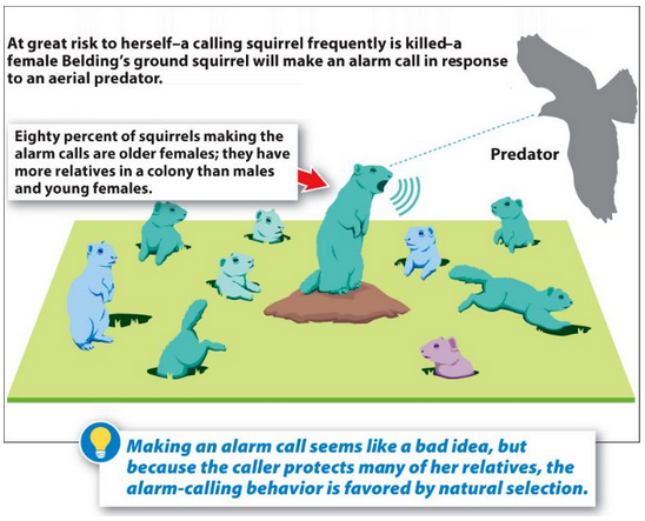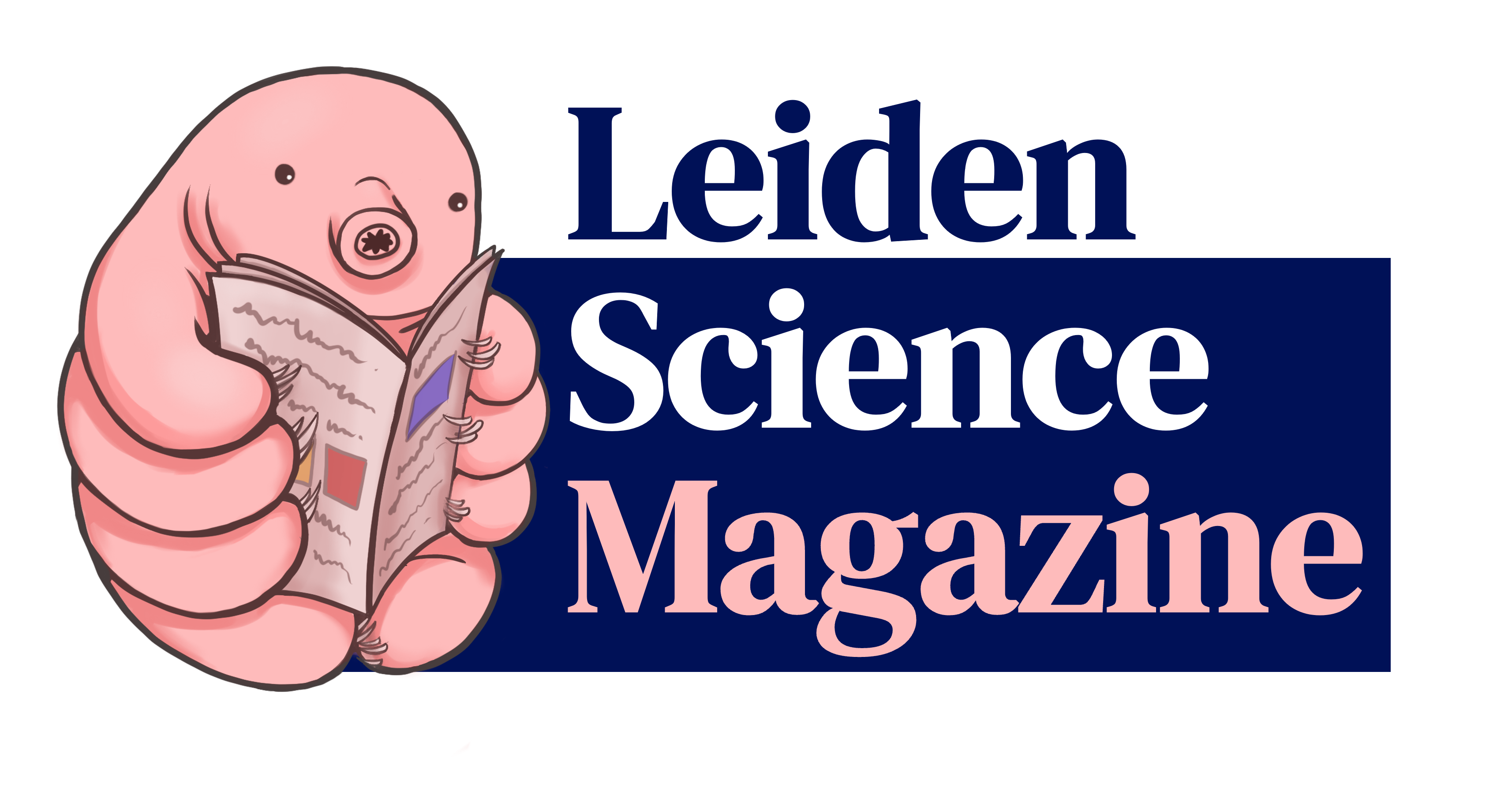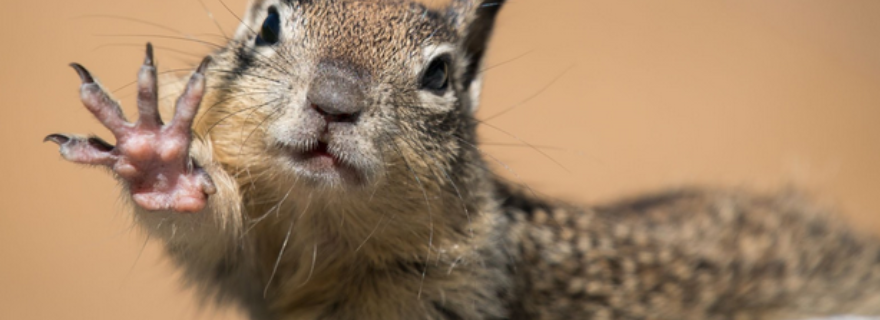The calculated altruism
Evolution by natural selection is a fiercely competitive process. Resources are limited in nature. Thus animals should always be up for themselves and reproduce at the expense of other individuals.
Competition is indeed a major mode of species interaction, but oddly enough, altruistic behaviors are also quite common. If you are a fan of BBC documentaries, you might have already seen the video clip of a ground squirrel sacrificing itself to warn others about the approach of a predator. We see such self-sacrificing behaviours not only in ground squirrels, but also in ants, chimpanzees, amebas…and of course in humans. So, what is going on here? What is the logic behind organisms helping each other, sometimes at the expense of their lives?
Interestingly, Darwin himself was the first person to propose an explanation. In his view, natural selection occurs at the level of a group rather than individuals. Members of the group adopt self-sacrificing traits for the “common goods”—survival of the group as a whole.
But does everyone in the group agree with the “fight for the common goods” idea? Of course not. For altruistic traits to thrive, they need to survive the exploitation from “free riders”. These “free riders” have a clear advantage compared to altruists: they keep all the resources for themselves but never give back to other members. Even if there is only one “free rider” in the group, it can still easily spread around and outcompete altruists in the short term. Imagine a group full of exploitative individuals. In the long run, it will lead to the extinction of the whole group.
If group selection is not a sufficient explanation for the emergence of altruistic traits, what is the alternative? William Hamilton coined the term “inclusive fitness” in 1964 to claim organisms execute altruistic behaviours based on cost-and-benefit calculation. He used a simple formula to conceptualize his theory: b*r > c. Here b is the benefit gained by the recipient of the altruistic behaviour (e.g. how many offspring they produce or save from predators), c is the cost paid by the altruistic provider and r is the genetic relatedness between altruistic provider and the recipient.
To clarify the formula by using an example: Like ground squirrels parents and offspring, full siblings have half their genes in common. As a result, selection might also favor helping siblings or helping one’s parents produce more siblings. This thinking led Hamilton to the idea of inclusive fitness, the total effect an individual has on proliferating its genes by producing its own offspring and by providing aid that enables other close relatives to produce offspring.

We don’t expect animals to actually perform a calculation based on Hamilton’s rule. But the core concept of his theory —“relatives help relatives”, is in general very successful in explaining the altruism we see in nature. Big mammals such as elephants form strong social groups with their family members. Studies have also found that insects such as red fire ants secrete special chemicals to distinguish whether an individual is from the same tribe. From Hamilton’s point of view, competition among genes is driving the process of evolution, and individuals are merely the carriers for genes. By programming the related individuals to behave altruistically, the genes are more likely to survive in the gene pool.
However, there is still one type of altruism that Hamilton’s rule cannot explain: altruism behaviours in human society. Although humans form a close relationship with their family members, it is true that we see altruistic behaviours between people who do not share genes. Philosopher Jonathan Birch from the London School of Economics and Political Science provides an explanation: “We have to think of the key term of evolution differently, meaning that instead of thinking about a coefficient of genetic relatedness, we have to think about a coefficient of cultural relatedness. ” Humans help people who are culturally similar to them, because culture is the transmissible “gene” to human society. However, since culture is something that we acquired from external sources, such as education, religion and social interactions, it is hard to explain our altruistic behaviours.



0 Comments
Add a comment